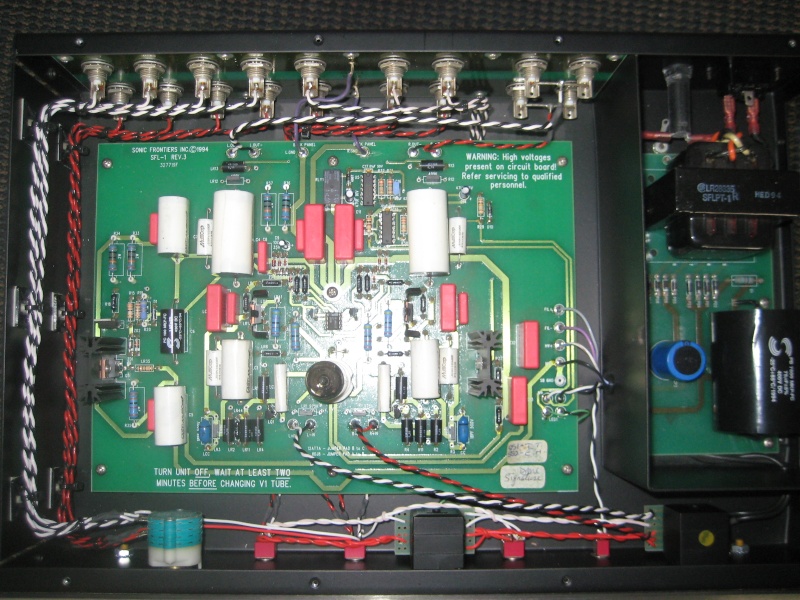

Enter the Sonic Frontiers SFL-2 - a no-holds-bared preamp at an unbelievable price for what you get of $1200 (used). The problem was that these were all serious money (with the possible exception of the Joule) and I didn't want to wait. The quality of sound from those Wolcott amps simply demanded the absolute best preamp that there was! The five preamps that very quickly became options were the Lamm LL2, the Sonic Frontiers Line 3, the Conrad Johnson 17LS2, the Joule Electra LA-100MkIII and the Hovland HP100. Which leads me on to the Sonic Frontiers SFL-2 preamp. I can only think that the ability to hear all aspects of each sound allowed your brain to easily identify where it came from.ģ) As mentioned, the feeling of being there and being part of the performance was far stronger than before and I can only put this down to an increase in the depth of the soundstage and the rock-solid stability of the instrument images. What was a collection of performers merging into a single performance became individual performers, each uniquely identifiable and yet an integral part of the overall performance. Which leads into the next difference.Ģ) The separation of sounds and instruments into their constituent parts was breathtaking. you heard the knock but you also heard the detail that went with that - I can best describe it as hearing the quality of the wood! Without any mistake, you also heard the sound of how the knock resonated in the six associated strings! What was previously just a knock became a superb, captivating, harmonically rich event! Now consider that every sound heard now had that harmonic richness associated with it and you start to get an idea of the impact that this has. What was identifiable before as the artist knocking on his guitar, became more. I've listened carefully to what it is that is so striking about the new sound and come to the conclusion that it is a combination of things:ġ) The first that struck me was that sounds had much more of the accompanying harmonic content than they did before. And this was with them being fed by a $600 preamp! Not only that but the sense of 'being there' was so strong that it was simply incomparable to what I had before. I heard 30% more music - it is that simple. Let me unequivocally say that the Wolcotts are the best amplifiers that I have ever heard and, I currently believe, perhaps the best that I will ever hear. This had the added advantage that I could try out the Wolcotts with both an active (LS-3) and passive (OBH-10) preamp. Due to the cost of the Wolcotts (about $4500 used) I bought the cheapest good preamp I could at the time - a used Audio Research LS-3 that came with a Creek OBH-10 passive remote volume control (total cost $600). Now one of the problems with upgrading from an integrated is that you have to buy both an amp and a preamp at the same time. I recently traded in the M3 (along with every spare thing that wasn't being used around the house) and bought a used pair of Wolcott P220m amplifiers. The problem is that I've now heard better. Make no mistake, this is an outstanding integrated amp and at that stage in my audio journey I fully believed that it deserved that rating. I've owned a Musical Fidelity NuVista M3 amp for the last 5 years and gave it a 5/5 rating when I bought it. The problem with writing reviews (and especially with allocating 1-5 stars) is that you get to read them years later when you have more experience and you have (hopefully) steadily improved your system.


 0 kommentar(er)
0 kommentar(er)
